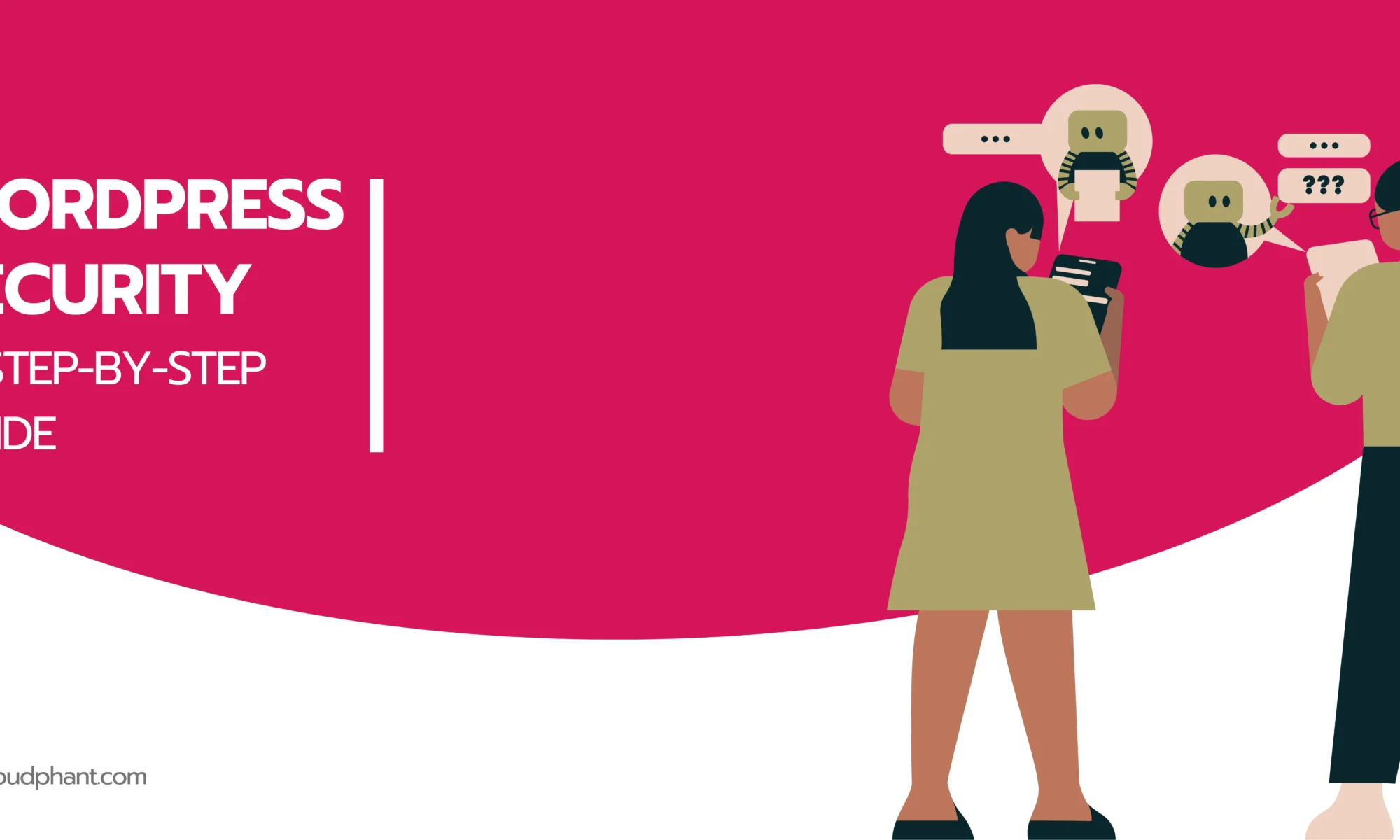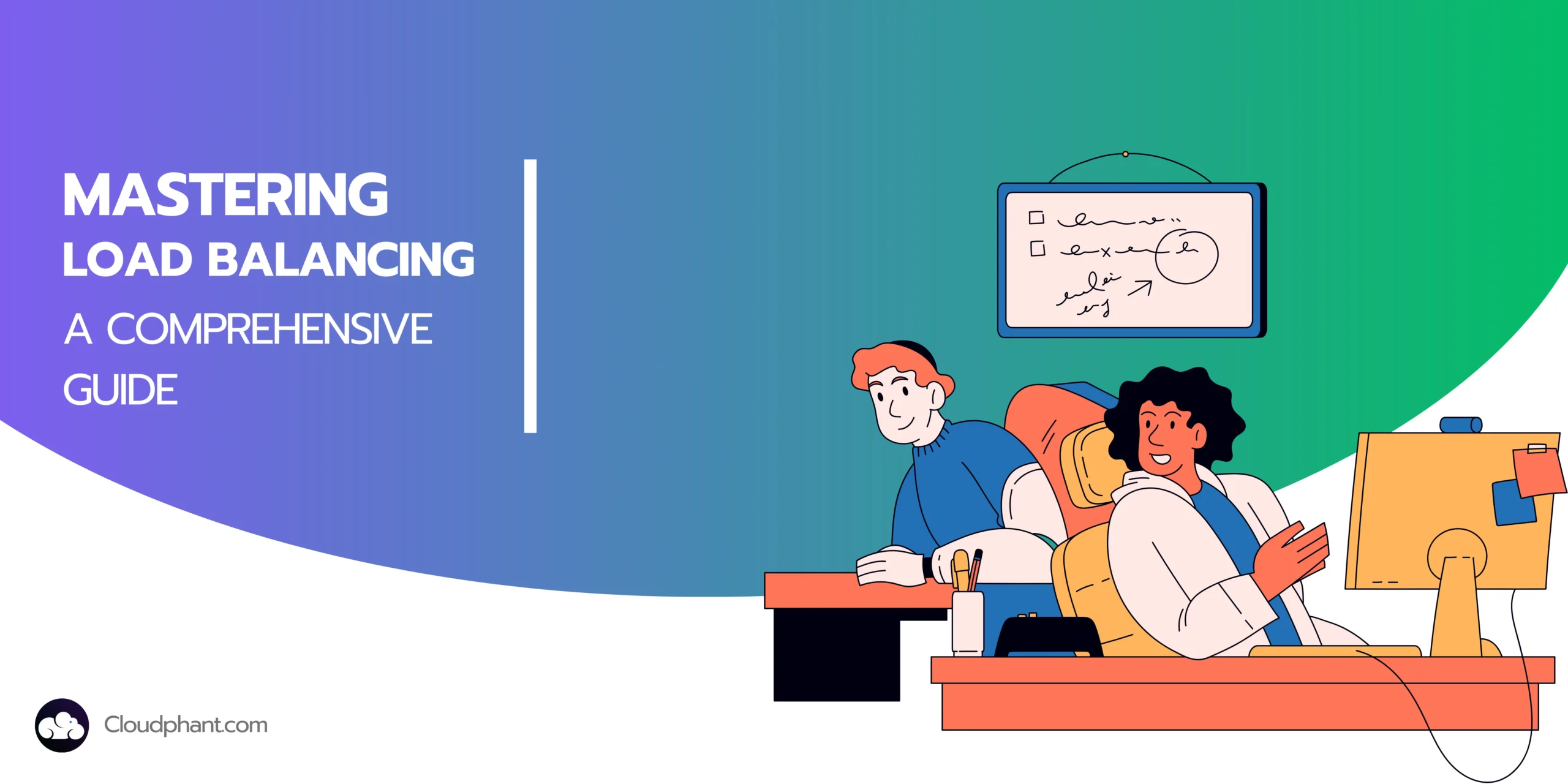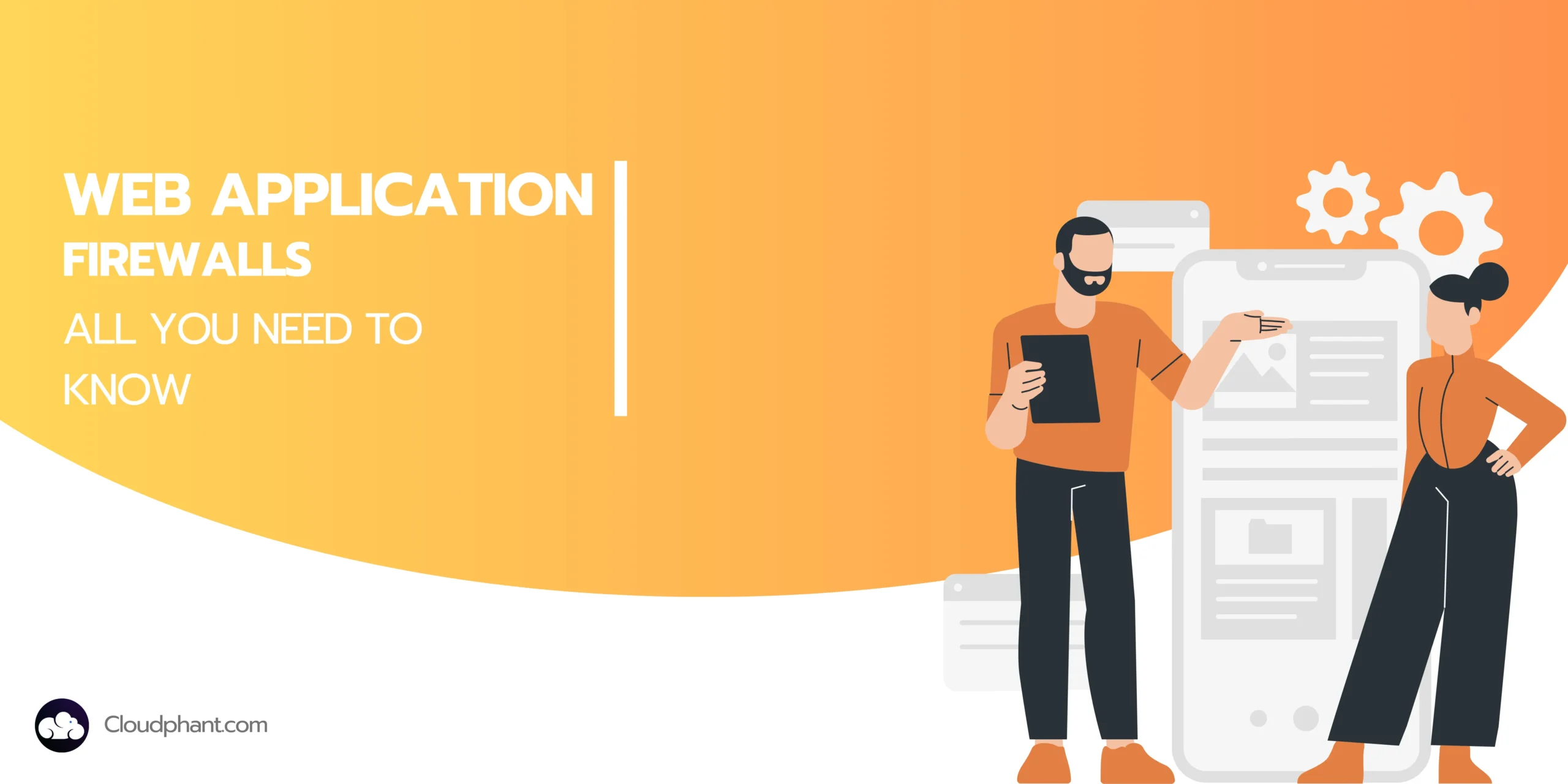A Guide to WordPress Security
This comprehensive blog delves into the critical aspects of WordPress security, offering detailed insights and actionable steps to protect your website from malicious attacks. By understanding the importance of WordPress security, recognizing the causes of security issues, and implementing these comprehensive steps, you can significantly reduce the risk of security breaches
WordPress is widely recognised as the leading content management system (CMS), with an impressive market share of over 43% of all websites on the internet. Due to its popularity, versatility, and intuitive design, it is unfortunately vulnerable to malicious attacks. Securing your WordPress site is essential for maintaining your online presence and reputation.
This guide provides a thorough exploration of the importance of WordPress security, the factors contributing to security issues, and 20 effective methods to enhance the security of your website. In addition, we will delve into the reasons behind attackers’ focus on WordPress sites, methods to detect if your site has been compromised, and the necessary actions to take in such a situation.
Why is WordPress Security Important?
Given the prevalence of WordPress as a website platform, it has unfortunately become a favored target for hackers and cybercriminals seeking to take advantage of any weaknesses. When a WordPress site is hacked, the consequences can be quite severe. This includes potential data breaches, website defacements, malware injections, and even complete takeovers.
When a website is compromised, visitor data, including personal information, login credentials, and financial details, may be exposed, which can pose a significant risk to users. When websites are hacked, they can be utilized for unlawful purposes such as spamming, spreading malware, or engaging in cryptocurrency mining. These activities can result in legal consequences and significant harm to the reputation of the affected site.
Moreover, search engines like Google regularly check websites for hazardous information and ban those determined to be infiltrated or distributing malware. A blacklisted site might experience a considerable decline in search rankings and visitors, consequently harming its visibility and revenue streams. Security breaches can lead to downtime, loss of revenue, and additional expenditures for recovery and remediation. A safe WordPress site provides uninterrupted business operations and protects against financial losses.
Maintaining effective WordPress security measures is therefore vital for securing your site, your users, and your business’s online presence. By applying security best practices and remaining cautious, you may significantly reduce the risk of successful attacks and maintain the integrity of your WordPress website.
Causes of WordPress Security Issues:
Understanding the root causes of WordPress security issues is crucial for preventing them. Here’s a detailed look into the primary factors that contribute to vulnerabilities in WordPress websites:
Outdated Core Software and Plugins:
New versions of WordPress core or plugins can include security features that older versions lack. Incompatibilities between outdated components can also introduce security flaws.
Running outdated WordPress core software, themes, and plugins is one of the primary reasons for security vulnerabilities. Developers frequently release updates to patch security holes and improve functionality.
Weak Passwords:
Passwords are the first line of defense against unauthorized access. Weak or easily guessable passwords significantly increase the risk of brute force attacks, where attackers use automated scripts to guess login credentials.
Using weak or easily guessable passwords makes it simple for hackers to gain access to your WordPress admin panel. Implementing strong, complex passwords is a basic yet critical security measure. Avoid reusing passwords across multiple sites to prevent a single compromised password from leading to multiple breaches
Poor Hosting Environment:
Choosing a low-cost, unreliable hosting provider can expose your site to security risks. Shared hosting environments, in particular, can be susceptible to cross-site contamination if one of the sites on the server is compromised.
Opt for hosting providers with a strong reputation for security. Look for features like automated backups, firewalls, malware scanning, and DDoS protection.
Lack of Security Plugins:
Not utilizing security plugins to monitor and protect your site can leave it vulnerable to various attacks. Security plugins offer features like firewalls, malware scanning, and login protection. Many site owners either don’t use security plugins or fail to configure them properly. Along with that relying solely on security plugins without implementing other best practices can leave gaps in your security posture
SQL Injection and XSS Attacks:
SQL Injection and Cross-Site Scripting (XSS) are common attack vectors where attackers inject malicious code into your site’s database or front-end, respectively. Proper coding practices and security measures can mitigate these risks. Validate and sanitize all user inputs to prevent malicious data from being processed. Also employ Content-Security-Policy (CSP) to protect against XSS.
File Permissions:
Incorrect file permissions can allow unauthorized users to modify or access sensitive files on your server. Ensuring proper file permissions is essential to protect your WordPress site.
Absence of SSL Certificates:
SSL (Secure Sockets Layer) encrypts the data transmitted between your users and the server, protecting it from interception and tampering.
Without SSL, data such as login credentials, personal information, and payment details can be intercepted by attackers and data interception and man-in-the-middle attacks are easy to do by attackers. SSL encrypts data transferred between the user and the server, providing an extra layer of security.
How to Secure Your WordPress Website?
Ensuring the security of your WordPress website involves implementing a series of best practices and utilizing various tools and plugins to safeguard against threats. Let’s, explore some effective ways to secure your WordPress site:
Keep WordPress Core, Themes, and Plugins Updated:
Keeping your WordPress core, themes, and plugins updated is crucial as developers frequently release updates to fix security vulnerabilities, improve functionality, and add new features. Enable automatic updates for minor core releases and plugins that support it. Add the following to your wp-config.php file to enable core updates:
define('WP_AUTO_UPDATE_CORE', true);Also, Regularly check for and manually apply updates through the WordPress admin dashboard under Dashboard > Updates.
Use Strong Passwords and Two-Factor Authentication (2FA):
Passwords should be complex, unique, and difficult to guess. Avoid common phrases, names, or predictable sequences. Two-factor authentication adds an extra layer of security by requiring a second form of verification, such as a code sent to your phone. Plugins like Google Authenticator or Wordfence Login Security can be used to enable 2FA.
Choose a Secure Hosting Provider
Look for hosts that offer features like malware scanning, automated backups, firewalls, and DDoS protection. Choose a hosting provider with a strong reputation for security and reliability.
Install a Security Plugin:
Wordfence: Offers firewall protection, malware scanning, and login security.
Sucuri Security: Provides security activity auditing, malware scanning, and website firewall.
iThemes Security: Includes features like two-factor authentication, brute force protection, and file change detection.
Implement a Web Application Firewall (WAF):
A WAF monitors and filters HTTP traffic between your site and the internet, blocking malicious traffic and preventing attacks like SQL injection and cross-site scripting (XSS). Use services like Cloudflare or Sucuri, which offer easy-to-deploy cloud-based WAFs.
Security plugins like Wordfence include built-in WAF features.
Limit Login Attempts:
Limiting the number of login attempts can prevent attackers from guessing your password through repeated trials. Also, find a plugin that allows you to set limits on login attempts and also includes a feature to limit login attempts and block IPs after a set number of failed attempts.
Disable File Editing in WordPress Dashboard:
By default, WordPress allows administrators to edit PHP files directly from the dashboard. Disabling this feature can prevent attackers from injecting malicious code if they gain access to the admin area.
For disabling it, Add the following line to your wp-config.php file:
define('DISALLOW_FILE_EDIT', true);
Change Default Login URL:
Changing the default login URL from /wp-admin or /wp-login.php to a custom URL can reduce the risk of automated attacks.
WPS Hide Login is a plugin that allows you to easily change the login URL to something unique.
Use SSL Certificates:
SSL encrypts the data transferred between your users and your website, protecting it from interception and tampering.
Many hosting providers offer free SSL certificates through Let’s Encrypt. Ensure your site is configured to use HTTPS by updating your WordPress and site URL settings in Settings > General.
Regular Backups:
Regular backups ensure you can quickly restore your site in case of a security breach, data loss, or other issues.
UpdraftPlus is popular backup plugin that allows you to schedule automatic backups and store them off-site (e.g., Google Drive, Dropbox).
BackupBuddy: Another comprehensive backup solution that offers automated backups, restore options, and off-site storage.
Secure wp-config.php File:
The wp-config.php file contains critical configuration details for your WordPress site, including database connection information.
Move the wp-config.php file to a directory one level above the root directory. Restrict access to the file by setting its permissions to 440 or 400.
Restrict Access to wp-admin Directory:
Limiting access to the wp-admin directory can prevent unauthorized users from accessing your WordPress admin panel.
Add the following code to your .htaccess file to allow access only from specific IP addresses:
<Files wp-login.php>
Order Deny,Allow
Deny from all
Allow from xx.xx.xx.xx
</Files>
Disable XML-RPC:
XML-RPC can be exploited for brute force attacks and DDoS attacks. Disabling it can reduce these risks. Add the following code to your theme’s functions.php file:
add_filter('xmlrpc_enabled', '__return_false');
Monitor User Activity:
Monitoring user activity helps you detect suspicious behavior and identify potential security breaches. WP Activity Log logs and monitors user activities on your WordPress site, providing detailed reports and alerts.
Set Correct File Permissions:
Correct file permissions prevent unauthorized users from modifying or accessing sensitive files. For Directories, set permissions to 755. For Files, set it to 644, and for wp-config.php Set permissions to 440 or 400 for added security.
Disable Directory Indexing and Browsing:
Disabling directory indexing prevents attackers from browsing the contents of directories, which could reveal sensitive information.
How to Disable?
Add the following line to your .htaccess file:
Options -Indexes
Use a Secure Database Prefix:
Changing the default database prefix (wp_) can make it harder for attackers to exploit database vulnerabilities.
Customize the database prefix during the WordPress installation process. Use a plugin like Brozzme DB Prefix to change the database prefix on an existing site.
Implement Security Headers:
Security headers protect your site from various types of attacks, including XSS, clickjacking, and MIME type sniffing.
How to Implement?:
Add the following headers to your .htaccess file:
Header set X-Content-Type-Options "nosniff"
Header set X-Frame-Options "SAMEORIGIN"
Header set X-XSS-Protection "1; mode=block"
Header set Content-Security-Policy "default-src 'self'"
Scan Your Site Regularly:
Regular scans help you detect malware, vulnerabilities, and unauthorized changes to your site. Sucuri SiteCheck is a free online tool that scans your site for malware and security issues. Use plugins like Wordfence or Sucuri Security for automated scans and alerts.
Educate Yourself and Your Team:
Keeping yourself and your team informed about the latest security threats and best practices is crucial for maintaining a secure site. Conduct regular security training sessions for your team.
Follow reputable security blogs, forums, and news sites to stay informed about new vulnerabilities and security measures.
Why Would Someone Attack/Hack a WordPress Website?
Understanding the motivations behind why attackers target WordPress websites is crucial for developing effective security strategies. Hackers have various incentives, ranging from financial gain to political motives, and knowing these can help website owners better protect their sites.
- Financial Gain: One of the primary reasons hackers target WordPress websites is for financial gain. Cybercriminals can make money in several ways by exploiting a compromised site. For instance, they might inject malicious ads or links into your website, redirecting traffic to their own sites and generating revenue through clicks. Another common method is to create phishing pages that mimic legitimate websites to steal sensitive information such as credit card numbers and login credentials. Additionally, hackers might infect your site with ransomware, locking you out until a ransom is paid. They can also use compromised sites to host illegal content or sell access to other malicious actors who can use your resources for their own illicit activities.
- Stealing Sensitive Information: Hackers often attack websites to steal sensitive information. This could include personal data of your site’s users, such as email addresses, passwords, and payment details. Once obtained, this data can be sold on the dark web or used to commit identity theft and fraud. For e-commerce sites, the stakes are even higher, as they handle a significant amount of financial transactions. Attackers may target these sites to steal credit card information and personal details, causing significant financial and reputational damage to the affected businesses and their customers.
- Spreading Malware: Another common motive for hacking a WordPress site is to spread malware. Attackers can infect your site with malicious software that gets downloaded onto the devices of visitors. This malware can be used to steal personal information, monitor user activities, or even recruit the infected devices into a botnet. Botnets are networks of compromised computers that hackers use to launch large-scale attacks, such as Distributed Denial of Service (DDoS) attacks. These attacks can cripple websites by overwhelming them with traffic, causing them to crash and become unavailable to legitimate users.
- SEO Spamming: Hackers also target WordPress sites to boost the SEO rankings of their own malicious sites. This is known as SEO spamming or black hat SEO. They infiltrate your site and inject spammy links and keywords into your content, comments, and meta descriptions. These links often lead to dubious or illegal websites. This not only harms your site’s search engine rankings due to penalties from search engines like Google but also diminishes the user experience and credibility of your site. Moreover, your site could get blacklisted by search engines, causing a significant drop in traffic and revenue.
- Political or Ideological Reasons: Sometimes, hackers attack websites for political or ideological reasons. This type of attack, known as hacktivism, involves defacing websites, spreading propaganda, or disrupting services to make a political statement or promote a cause. These attacks are often high-profile and can cause significant reputational damage. For example, government websites, non-profit organizations, and companies involved in controversial activities are frequent targets. Hacktivists aim to draw public attention to their cause, and a compromised website can be an effective platform for this purpose.
- Competition Sabotage: In some cases, competitors might hire hackers to sabotage rival businesses. This could involve defacing the website, injecting negative SEO tactics, or stealing proprietary information to gain a competitive advantage. Such actions can lead to a loss of business, legal battles, and a tarnished reputation. For e-commerce businesses, downtime caused by such attacks can result in significant financial losses and a decrease in customer trust.
- Using Your Server for Illegal Activities: Hackers might compromise your WordPress site to use your server for various illegal activities without your knowledge. They can host phishing sites, illegal downloads, or command and control centers for botnets. Using your server allows them to mask their activities and evade law enforcement. Additionally, your server’s resources can be exploited to mine cryptocurrencies, which requires substantial processing power and can slow down your site, leading to poor performance and user experience.
- Demonstrating Skill: Some hackers attack websites simply to demonstrate their skills or for the thrill of it. These individuals, often called script kiddies, typically exploit well-known vulnerabilities using automated tools rather than sophisticated techniques. While their motivations might not be financial, the damage they cause can still be significant, leading to downtime, data loss, and security breaches that could have been avoided with proper safeguards.
Conclusion
Securing your WordPress website is an ongoing process that requires diligence and the implementation of multiple layers of protection. By understanding the importance of WordPress security, recognizing the causes of security issues, and implementing these 20 comprehensive steps, you can significantly reduce the risk of security breaches and ensure a safer online environment for your users. Prioritize regular updates, use strong passwords, choose a secure hosting provider, and leverage security plugins to build a robust defense against potential threats.
Recent Post
Mastering Load Balancing for Optimal WordPress…
Enhance your WordPress site's performance and reliability…
Cross-Site Scripting (XSS): A Comprehensive Guide
Discover the ins and outs of Cross-Site…
Understanding Web Application Firewall (WAF)
Explore Web Application Firewalls (WAFs): how they…




